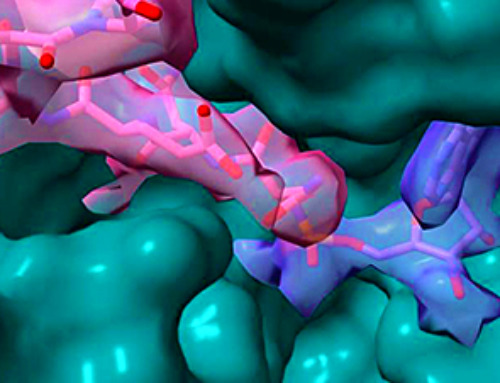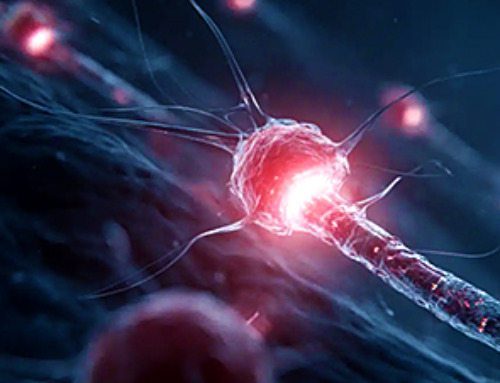Baylor researchers developed a reversible, non-hormonal male contraceptive targeting the sperm-specific protein STK33, showing effectiveness and safety in mice studies.
In the past six decades, the global population has surged more than 260%, and it shows no signs of slowing down. Estimates suggest that by 2037, Earth’s population will climb from 8 billion in 2022 to 9 billion. This continued growth highlights the critical importance of family planning. Despite this need, there have been few significant advancements in contraceptive options recently, particularly for men, who still lack access to an oral contraceptive pill.
In a study published in the journal Science, researchers at Baylor College of Medicine and collaborating institutions show in animal models that a novel, non-hormonal sperm-specific approach offers a promising option for reversible human male contraception.
“Although researchers have been investigating several strategies to develop male contraceptives, we still do not have a birth control pill for men,” said corresponding author Dr. Martin Matzuk, director of the Center for Drug Discovery and chair of the Department of Pathology and Immunology at Baylor. “In this study, we focused on a novel approach – identifying a small molecule that would inhibit serine/threonine kinase 33 (STK33), a protein that is specifically required for fertility in both men and mice.”
Previous research has shown that STK33 is enriched in the testis and is specifically required for the formation of functional sperm. In mice, knocking out the Stk33 gene renders the mice sterile due to abnormal sperm and poor sperm motility. In men, having a mutation in the STK33 gene leads to infertility caused by the same sperm defects found in the Stk33 knockout mice. Most importantly, mice and men with these mutations have no other defects and even have normal testis size.
“STK33 is therefore considered a viable target with minimal safety concerns for contraception in men,” said Matzuk, who has been on faculty at Baylor for 30 years and is Baylor’s Stuart A. Wallace Chair and Robert L. Moody, Sr. Chair of Pathology and Immunology. “STK33 inhibitors have been described but none are STK33-specific or potent for chemically disrupting STK33 function in living organisms.”
Finding an Effective STK33 inhibitor
“We used DNA-Encoded Chemistry Technology (DEC-Tec) to screen our multi-billion compound collection to discover potent STK33 inhibitors,” said first author Dr. Angela Ku, staff scientist in the Matzuk lab. “Our group and others have used this approach before to uncover potent and selective kinase inhibitors.”
The researchers uncovered potent STK33-specific inhibitors, from which they successfully generated modified versions to make them more stable, potent, and selective. “Among these modified versions, compound CDD-2807 turned out to be the most effective,” Ku said.
“Next, we tested the efficacy of CDD-2807 in our mouse model,” said co-author Dr. Courtney M. Sutton, a postdoctoral fellow in the Matzuk lab. “We evaluated several doses and treatment schedules and then determined sperm motility and number in the mice as well as their ability to fertilize females.”
Compound CDD-2807 effectively crossed the blood-testis barrier and reduced sperm motility and numbers and mice fertility at low doses. “We were pleased to see that the mice did not show signs of toxicity from CDD-2807 treatment, that the compound did not accumulate in the brain, and that the treatment did not alter testis size, similar to the Stk33 knockout mice and the men with the STK33 mutation,” Sutton said. “Importantly, the contraceptive effect was reversible. After a period without compound CDD-2807, the mice recovered sperm motility and numbers and were fertile again.”
“In our paper, we also present the first crystal structure for STK33,” said co-author Dr. Choel Kim, associate professor of biochemistry and molecular pharmacology and member of the Dan L Duncan Comprehensive Cancer Center at Baylor. “Our crystal structure showed how one of our potent inhibitors interacts with STK33 kinase in three dimensions. This enabled us to model and design our final compound, CDD-2807, for better drug-like properties.”
“This study was a tour de force by our team in the Center for Drug Discovery at Baylor and our collaborators,” said co-author Dr. Mingxing Teng, assistant professor of pathology and immunology and of biochemistry and molecular pharmacology at Baylor. Teng also is a Cancer Prevention Research Institute of Texas Scholar and a member of the Dan L Duncan Comprehensive Cancer Center at Baylor. “Starting with a genetically validated contraceptive target, we were able to show that STK33 is also a chemically validated contraceptive target.”
“In the next few years, our goal is to further evaluate this STK33 inhibitor and compounds similar to CDD-2807 in primates to determine their effectiveness as reversible male contraceptives,” Matzuk said.
Reference: “Reversible male contraception by targeted inhibition of serine/threonine kinase 33” by Angela F. Ku, Kiran L. Sharma, Hai Minh Ta, Courtney M. Sutton, Kurt M. Bohren, Yong Wang, Srinivas Chamakuri, Ruihong Chen, John M. Hakenjos, Ravikumar Jimmidi, Katarzyna Kent, Feng Li, Jian-Yuan Li, Lang Ma, Chandrashekhar Madasu, Murugesan Palaniappan, Stephen S. Palmer, Xuan Qin, Matthew B. Robers, Banumathi Sankaran, Zhi Tan, Yasmin M. Vasquez, Jian Wang, Jennifer Wilkinson, Zhifeng Yu, Qiuji Ye, Damian W. Young, Mingxing Teng, Choel Kim and Martin M. Matzuk, 23 May 2024, Science.
DOI: 10.1126/science.adl2688
News
Scientists Are Pretty Close to Replicating the First Thing That Ever Lived
For 400 million years, a leading hypothesis claims, Earth was an “RNA World,” meaning that life must’ve first replicated from RNA before the arrival of proteins and DNA. Unfortunately, scientists have failed to find [...]
Why ‘Peniaphobia’ Is Exploding Among Young People (And Why We Should Be Concerned)
An insidious illness is taking hold among a growing proportion of young people. Little known to the general public, peniaphobia—the fear of becoming poor—is gaining ground among teens and young adults. Discover the causes [...]
Team finds flawed data in recent study relevant to coronavirus antiviral development
The COVID pandemic illustrated how urgently we need antiviral medications capable of treating coronavirus infections. To aid this effort, researchers quickly homed in on part of SARS-CoV-2's molecular structure known as the NiRAN domain—an [...]
Drug-Coated Neural Implants Reduce Immune Rejection
Summary: A new study shows that coating neural prosthetic implants with the anti-inflammatory drug dexamethasone helps reduce the body’s immune response and scar tissue formation. This strategy enhances the long-term performance and stability of electrodes [...]
Scientists discover cancer-fighting bacteria that ‘soak up’ forever chemicals in the body
A family of healthy bacteria may help 'soak up' toxic forever chemicals in the body, warding off their cancerous effects. Forever chemicals, also known as PFAS (per- and polyfluoroalkyl substances), are toxic chemicals that [...]
Johns Hopkins Researchers Uncover a New Way To Kill Cancer Cells
A new study reveals that blocking ribosomal RNA production rewires cancer cell behavior and could help treat genetically unstable tumors. Researchers at the Johns Hopkins Kimmel Cancer Center and the Department of Radiation Oncology and Molecular [...]
AI matches doctors in mapping lung tumors for radiation therapy
In radiation therapy, precision can save lives. Oncologists must carefully map the size and location of a tumor before delivering high-dose radiation to destroy cancer cells while sparing healthy tissue. But this process, called [...]
Scientists Finally “See” Key Protein That Controls Inflammation
Researchers used advanced microscopy to uncover important protein structures. For the first time, two important protein structures in the human body are being visualized, thanks in part to cutting-edge technology at the University of [...]
AI tool detects 9 types of dementia from a single brain scan
Mayo Clinic researchers have developed a new artificial intelligence (AI) tool that helps clinicians identify brain activity patterns linked to nine types of dementia, including Alzheimer's disease, using a single, widely available scan—a transformative [...]
Is plastic packaging putting more than just food on your plate?
New research reveals that common food packaging and utensils can shed microscopic plastics into our food, prompting urgent calls for stricter testing and updated regulations to protect public health. Beyond microplastics: The analysis intentionally [...]
Aging Spreads Through the Bloodstream
Summary: New research reveals that aging isn’t just a local cellular process—it can spread throughout the body via the bloodstream. A redox-sensitive protein called ReHMGB1, secreted by senescent cells, was found to trigger aging features [...]
AI and nanomedicine find rare biomarkers for prostrate cancer and atherosclerosis
Imagine a stadium packed with 75,000 fans, all wearing green and white jerseys—except one person in a solid green shirt. Finding that person would be tough. That's how hard it is for scientists to [...]
Are Pesticides Breeding the Next Pandemic? Experts Warn of Fungal Superbugs
Fungicides used in agriculture have been linked to an increase in resistance to antifungal drugs in both humans and animals. Fungal infections are on the rise, and two UC Davis infectious disease experts, Dr. George Thompson [...]
Scientists Crack the 500-Million-Year-Old Code That Controls Your Immune System
A collaborative team from Penn Medicine and Penn Engineering has uncovered the mathematical principles behind a 500-million-year-old protein network that determines whether foreign materials are recognized as friend or foe. How does your body [...]
Team discovers how tiny parts of cells stay organized, new insights for blocking cancer growth
A team of international researchers led by scientists at City of Hope provides the most thorough account yet of an elusive target for cancer treatment. Published in Science Advances, the study suggests a complex signaling [...]
Nanomaterials in Ophthalmology: A Review
Eye diseases are becoming more common. In 2020, over 250 million people had mild vision problems, and 295 million experienced moderate to severe ocular conditions. In response, researchers are turning to nanotechnology and nanomaterials—tools that are transforming [...]





















